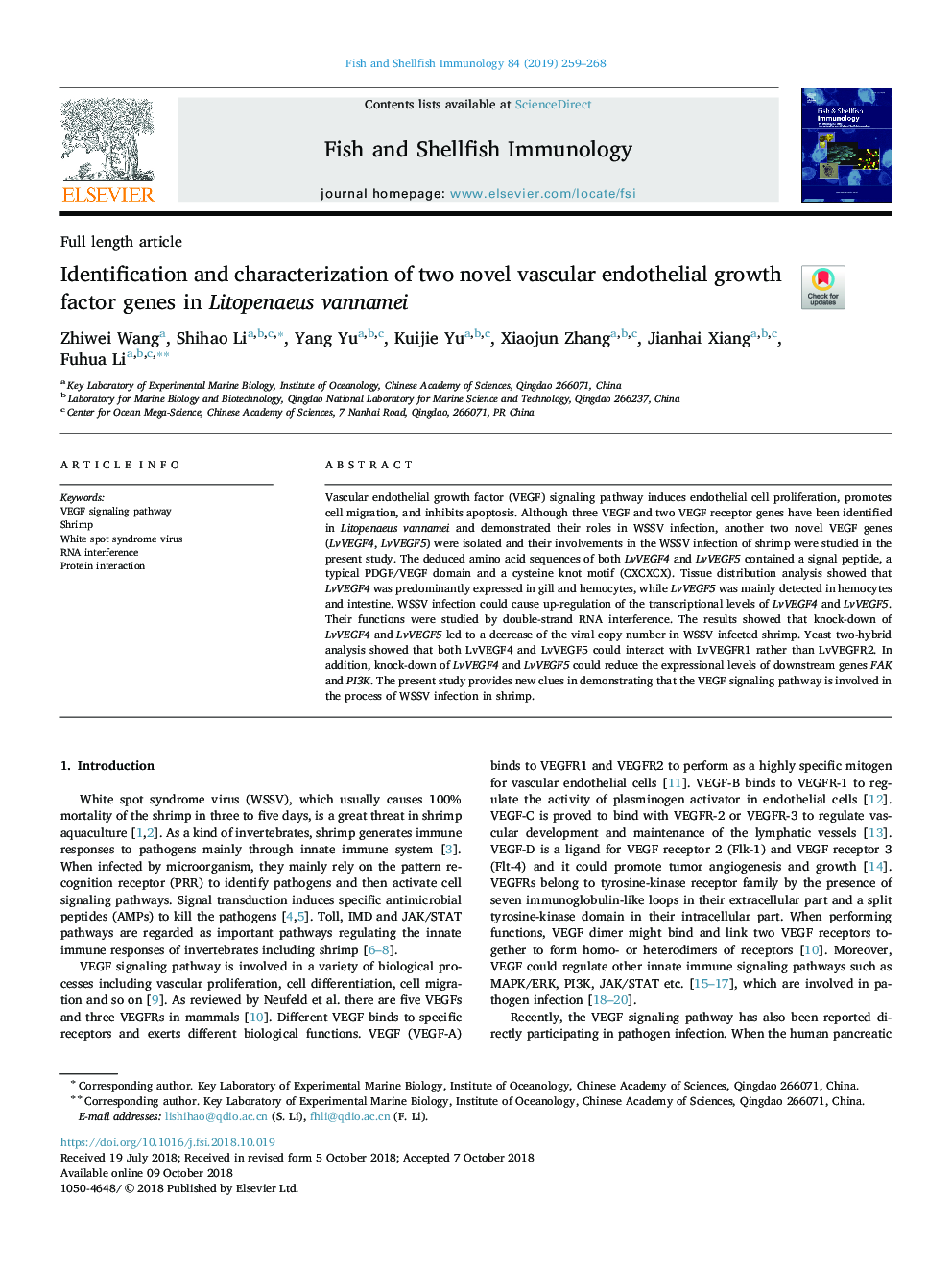| Article ID | Journal | Published Year | Pages | File Type |
|---|---|---|---|---|
| 11019446 | Fish & Shellfish Immunology | 2019 | 10 Pages |
Abstract
Vascular endothelial growth factor (VEGF) signaling pathway induces endothelial cell proliferation, promotes cell migration, and inhibits apoptosis. Although three VEGF and two VEGF receptor genes have been identified in Litopenaeus vannamei and demonstrated their roles in WSSV infection, another two novel VEGF genes (LvVEGF4, LvVEGF5) were isolated and their involvements in the WSSV infection of shrimp were studied in the present study. The deduced amino acid sequences of both LvVEGF4 and LvVEGF5 contained a signal peptide, a typical PDGF/VEGF domain and a cysteine knot motif (CXCXCX). Tissue distribution analysis showed that LvVEGF4 was predominantly expressed in gill and hemocytes, while LvVEGF5 was mainly detected in hemocytes and intestine. WSSV infection could cause up-regulation of the transcriptional levels of LvVEGF4 and LvVEGF5. Their functions were studied by double-strand RNA interference. The results showed that knock-down of LvVEGF4 and LvVEGF5 led to a decrease of the viral copy number in WSSV infected shrimp. Yeast two-hybrid analysis showed that both LvVEGF4 and LvVEGF5 could interact with LvVEGFR1 rather than LvVEGFR2. In addition, knock-down of LvVEGF4 and LvVEGF5 could reduce the expressional levels of downstream genes FAK and PI3K. The present study provides new clues in demonstrating that the VEGF signaling pathway is involved in the process of WSSV infection in shrimp.
Related Topics
Life Sciences
Agricultural and Biological Sciences
Aquatic Science
Authors
Zhiwei Wang, Shihao Li, Yang Yu, Kuijie Yu, Xiaojun Zhang, Jianhai Xiang, Fuhua Li,
